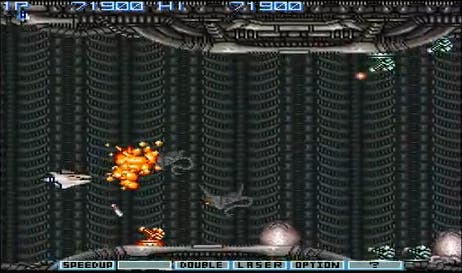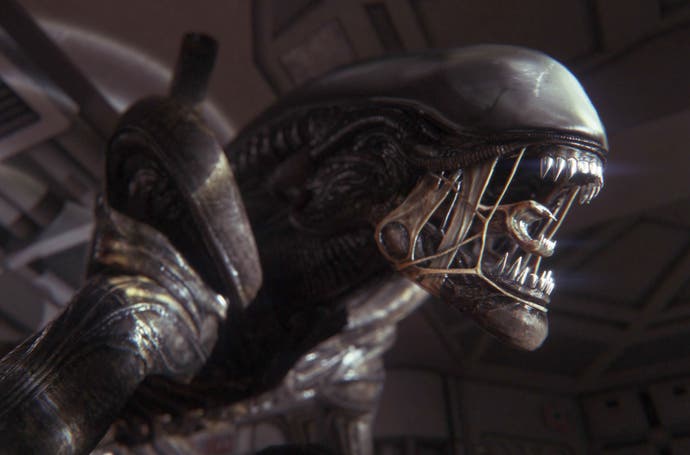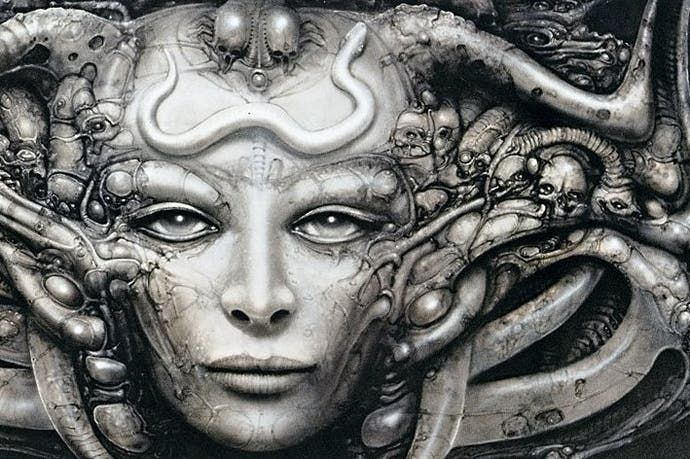Giger's shadow: the legacy of the great Swiss artist
H.R. Giger, 1940-2014.
Video games, even in their infancy, have their giants - the Miyamotos, Meiers, Carmacks and Kojimas - and they have too, in the shadows, those who have left an indelible mark on the medium. Think of Tolkien's fantasy landscapes being woven again and again across digital worlds, of Gibson's hardworn cyberpunks making countless cameos in dreary dystopias, or of Heinlein's hard-headed space marines screaming down impossible armies and marauding odds.
Then there are those who have contaminated video game's creative well with their own sweet poison. It's hard to turn anywhere in video games without seeing some of HP Lovecraft's deep dread seeping through, just as it's so often been hard to escape the sinister grace of Lovecraft's partner in the dark arts, Swiss artist H.R. Giger, who died earlier today aged 74.

Giger made his mark with his own Necronomicon - itself a weighted reference to Lovecraft - a compendium of images published in 1977 that would expose to the world his own fantasies, born through the artist's night terrors and a childhood spent in the banal horror of wartime Europe. Soon Hollywood would come knocking - first through Alejandro Jodorowsky, working on his own never to be completed version of Dune, and then later Ridley Scott, who was in the process of turning a small corner of Shepperton into film folklore.
The creature that emerged through the combined talents of Giger, Scott, scriptwriter Dan O'Bannon and the wiry 7ft 2in actor Bojali Bodejo has stalked popular culture ever since, with video games perhaps its most lucrative haunting ground. Even when the at times tainted licence hasn't been in tow, the dry horror presented by Giger's Alien has been a recurring motif in games through the past 30 years.
Giger himself was stalked through much of his career by that alien, though it is of course no small legacy. Scott's original was the only take on his creation that didn't truly depress him, and the violations against it would only worsen - from James Cameron's bulldozing of the creature's delicately constructed life-cycle with the introduction of the queen in Aliens to crimes much worse as the franchise bloated through the years. At least, in Creative Assembly's dedication to the 1979 original as a source in the forthcoming Alien: Isolation, there's likely to be a fitting tribute at last.
Of course Giger's influence goes beyond the alien, and his mark on video games reaches far. A pair of Dark Seed games published by Cyberdreams for the Amiga in the early 90s had their clunky point and click mechanics smoothed over with the inclusion of an alternate universe brutally brought to life by Giger's art. Yet by the time of its release the vision wasn't so otherworldly, having been appropriated by a legion of other games.

The biomechanic backdrops clearly struck a chord in the video game culture of 80s Japan, where an age of classics seemingly weren't complete without a full-blooded homage to Giger's work. R-Type's sticky shooting gallery oozes the influence, while Taito's Darius, too, was quick to pay its respects. Sometimes the tributes sailed a little close to the wind: Graduis 2's second stage sends players into a chitinous cavern, not thinking twice before sending scurrying crab-like creatures cascading your way from dark grey eggs.
There are echoes of his art in so many other games since, and in some ways it's a shame his explicit association with video games never went beyond the striking if somewhat limited Dark Seed games. You never had to look too hard to find it elsewhere, though, and Giger's own distinct style has become so roundly consumed by video games it's at times been in danger of becoming mere wallpaper.
A sticky subversion arrests that, though, and at the very least paints it with a thicker power. Giger's work dealt with the timeless themes of death and sexuality, and that slightly icky place where the two meet, but it was also expert in pinning down a more modern concern. In the blank faces augmented in unspeakable ways, there's some of the horror and cold-eyed beauty of where humanity and machinery collide, presenting a series of portraits as timely now as they've ever been. Giger might be gone, but his presence will always be felt by a medium forever in his debt.

